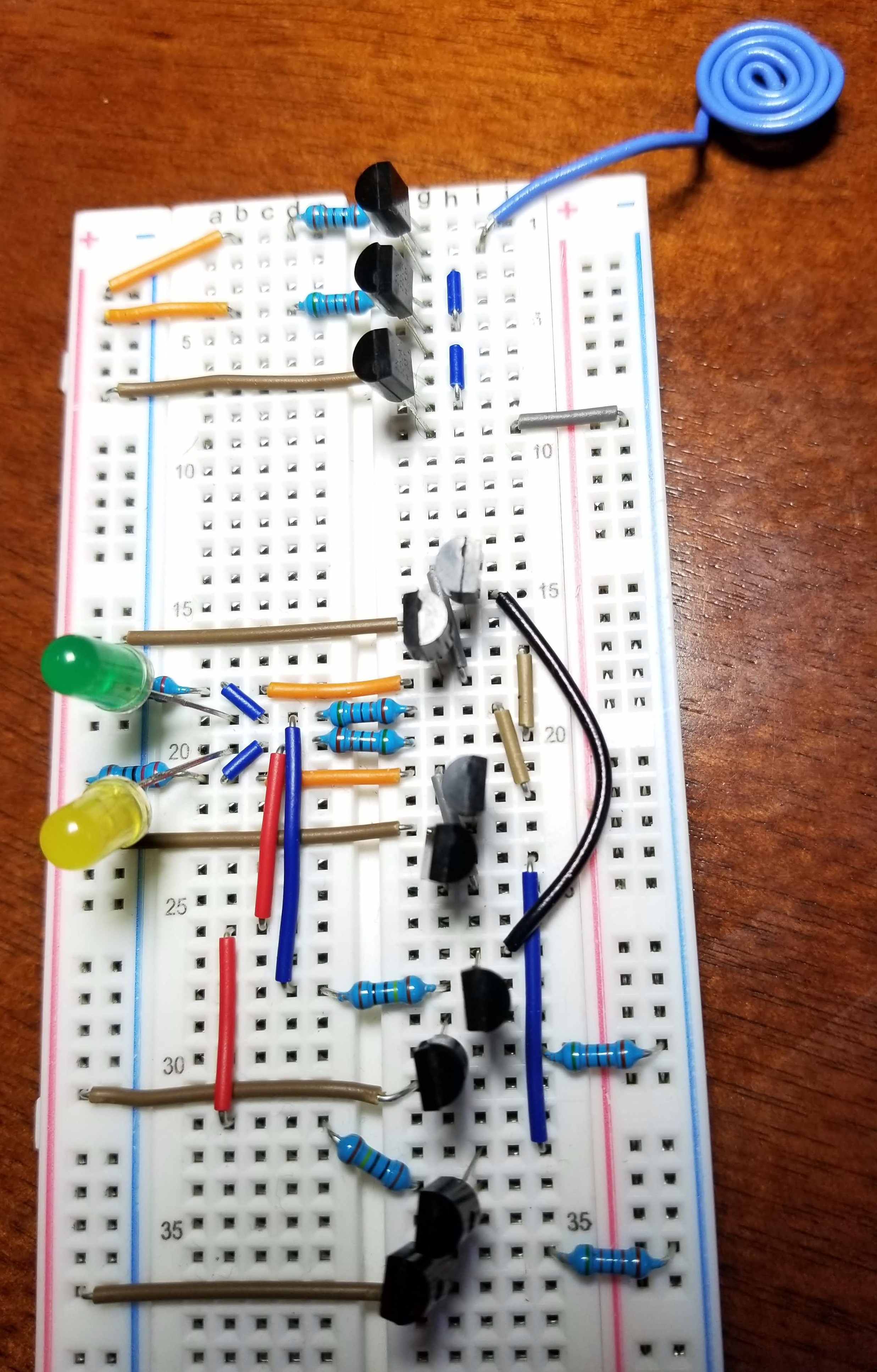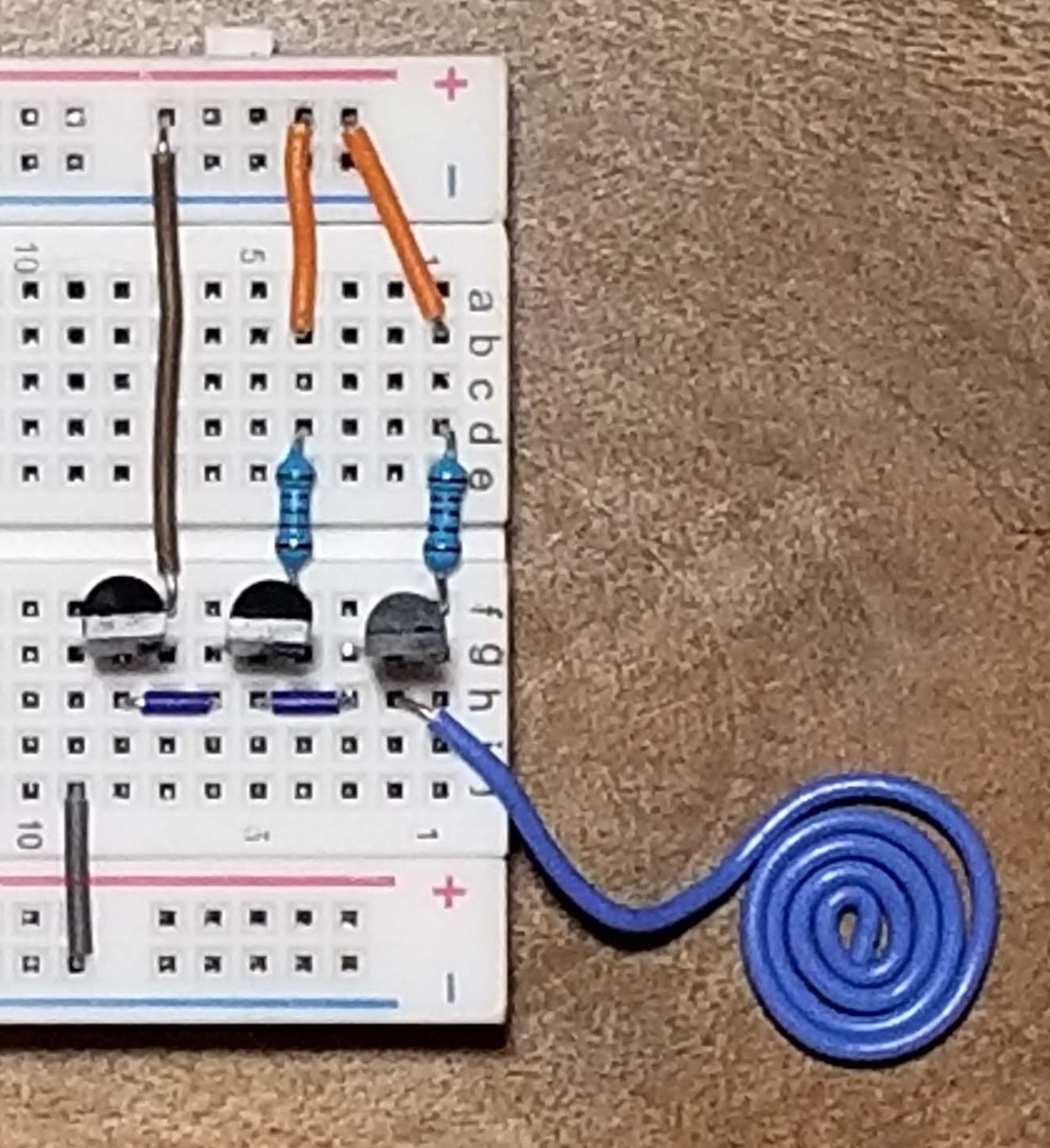The Plan
My plan with this project was to design a circuit with one input which determines one output, such that when the input “button” is pressed, the output is inverted.
I began my design with the common NOR gate SR latch design as my base. I knew my circuit needed to combine both the set and reset input of the SR latch while also making sure neither are high at the same time.



